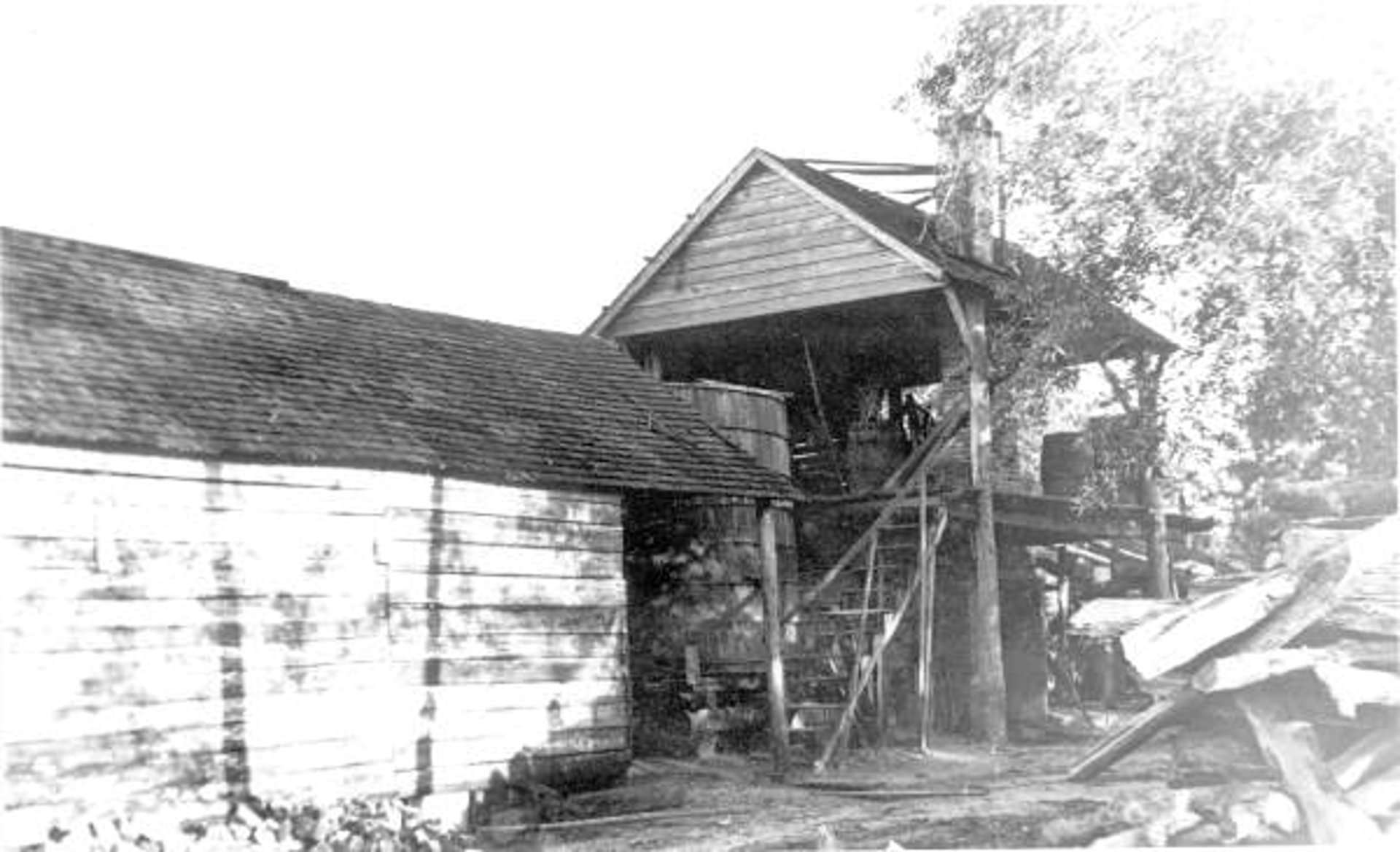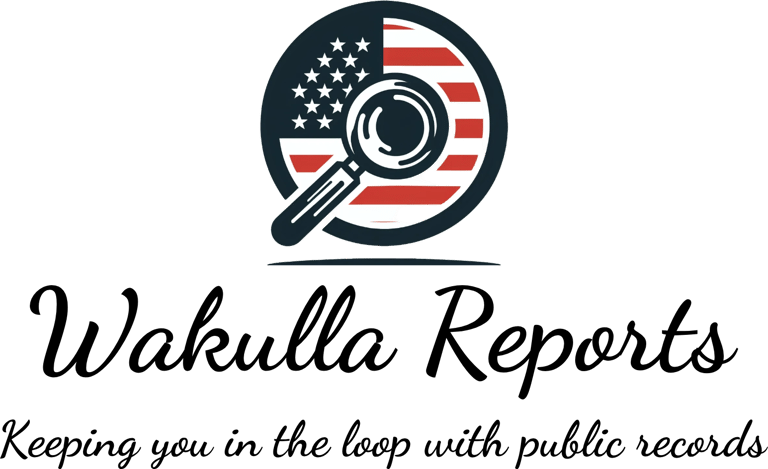Wakulla 2025: New Jobs, Old Problems, and a $60+M Question Mark
From animal shelter woes to boat ramp grumbles, debris cleanup to housing debates, the county’s juggling growth and safety while locals wonder: are we putting new jobs over old priorities?
MONEY & FINANCEDEVELOPMENT & INFRASTRUCTURE
Josephine Baker
3/27/20257 min read


Wakulla County’s kicking off 2025 with big plans—300 new jobs from Project Safety and Project Boomer sound promising, but at $60+M, are they worth the price? From animal shelter woes to boat ramp grumbles, debris cleanup to housing debates, the county’s juggling growth and safety while locals wonder: are we putting new jobs over old priorities? Here’s the latest, straight from the heart of Wakulla.
BoCC Focuses on Animal Shelters and Boat Ramps
On March 17, 2025, the Wakulla County Board of County Commissioners (BoCC) met to discuss improvements to the county’s animal shelter and boat ramps, as reported by WTXL ABC 27. The county’s been touting recent upgrades to the shelter—some painting, sheetrock, and plumbing work—like it’s a major overhaul. But the shelter’s the same size it’s been since it was built, and these changes are just lipstick on a pig. The 2025 Local Mitigation Strategy (LMS) Project 5 allocates $75K for a shelter generator to keep it powered during outages, which sounds practical until you dig deeper. Overcrowding and turning pets away remain rampant issues, and with the county’s population up 14% since 2010 (Reason Foundation, 2022), the shelter’s been stretched thin for years. A generator won’t fix the lack of space or staff to handle the influx—it’s a shiny distraction from the real crisis. Locals are fed up, and rightfully so—pets are family, and the county’s half-measures aren’t cutting it.
And then there’s the $75K generator itself—where do you even find one that pricey? For a shelter that hasn’t grown, a 20kW to 30kW generator—enough to power essentials like lighting and HVAC—should cost $10,000 to $20,000 installed, based on industry averages. A $75K unit would be commercial-grade, something you’d source from big players like Cummins, Generac, or Caterpillar through a distributor or contractor. We’re talking 50kW or higher, with bells and whistles like soundproofing or automatic transfer switches—overkill for a small shelter. Either the county’s buying a generator fit for a hospital, or that $75K includes hidden costs like electrical upgrades they’re not being upfront about. Meanwhile, the core issue—space for more animals—gets ignored. More lipstick, same pig.
Boat ramp upgrades aim to improve Gulf access, a longtime sore spot for fishers. But here’s the catch: refurbishing these ramps costs taxpayer money upfront—think design, permits, and construction—and then you still have to pay to use them. While exact costs for the 2025 upgrades aren’t public, similar projects in Florida, like Walton County’s $1.2M ramp overhaul in 2023, suggest Wakulla’s could run $500K-$1M, funded through the county budget or grants. Paying to use a ramp you already paid to fix? That’s a bitter pill for locals who just want to cast a line without breaking the bank. Another shiny project that feels more like a PR stunt than a real solution.
Affordable Housing Committee Steps Up
The Wakulla County Affordable Housing Advisory Committee met on March 20, 2025, to address the housing crunch, according to WTXL ABC 27. Median home prices hit $250K last year, and with growth continuing, families are feeling the squeeze. The committee’s exploring state SHIP funds and possibly impact fees—like the Kimley-Horn study on the BoCC’s April 7 agenda (RFP 2025-01). But more housing often means more development, which could clash with Wakulla’s rural charm. Locals are split: some want affordable options, others fear losing the quiet life they moved here for. Don’t hold your breath for real progress—the county’s track record suggests more talk than action.
Disaster Recovery Efforts Roll On
Wakulla’s still cleaning up from last year’s storms, and a March 23, 2025, a social media post on X from Tetra Tech Jobs advertised for a Debris Monitor in the county, hinting at ongoing debris removal efforts. The county’s also navigating long-term recovery, with FloridaCommerce hosting workshops on disaster funds (mywakulla.com, Nov 2024, but relevant for 2025 planning). The $47M in LMS projects—like hardening the EOC for $1.5M or Wakulla Gardens’ $3M stormwater fix—are critical, but FEMA’s slow pace has locals frustrated, especially when nearly $60M goes to economic projects like Project Safety and Project Boomer, which promise limited job growth for big bucks.
Community Safety Concerns
A hit-and-run on January 8, 2025, left a 9-year-old boy injured, with the driver fleeing in a maroon SUV, per ground.news. Home surveillance caught the vehicle, but the incident has sparked renewed calls for better road safety—especially on rural stretches where speeding’s a problem. The BoCC’s April 7 agenda includes a speed study software demo (Item 8), which might look good on paper, but many wonder if it’s just another empty gesture—too little, too late for a county that’s been dragging its feet on real safety fixes.
Environmental and Infrastructure Moves
The Florida DEP awarded funds to protect Wakulla’s aquifer, a win for the springs that some feel the county hasn’t prioritized enough (mywakulla.com, Nov 2024, but part of 2025 efforts). A January 2025 traffic advisory about paving at U.S. 319 and Bloxham Cutoff (mywakulla.com) shows roadwork continues, though locals grumble about congestion. The April 7 agenda’s beautification grants for U.S. 319 and Crawfordville Hwy aim to spruce things up, but they’re small potatoes compared to the $47M LMS needs—and more of the same: flashy projects that don’t tackle the root issues.
Project Safety and Project Boomer: Jobs vs. Costs
The tension between economic growth and safety remains a hot topic, especially with Triumph Gulf Coast’s investments in Project Safety and Project Boomer. These projects, aimed at boosting the local economy, have drawn scrutiny for their cost versus impact. Let’s break down the numbers from the project documents on myfloridatriumph.com, clearly separating jobs created from jobs retained, and including the county’s bond financing contribution.
Project Boomer: This initiative supports the expansion of Residential Elevators, a Crawfordville-based company founded in 1996. The BoCC initially requested $2.1M from Triumph Gulf Coast (Proposal #343, received Sep 23, 2024), but Governor DeSantis awarded $4.5M through the Rural Infrastructure Fund (Florida Politics, Dec 7, 2024). Triumph also approved $2.1M for a 20-acre site in Opportunity Park, bringing public funding to $6.6M. The project involves building a 100,000-square-foot facility, with a total cost of $12.5M. The company covers $5.9M, but Wakulla County is on the hook for additional costs through bond financing—estimated at $1M-$2M for infrastructure like utilities and road access, based on similar projects (e.g., Walton County’s $1.5M bond for industrial park prep in 2023). The project will create 150 new jobs by 2029, averaging about 30 new jobs per year (2025-2029), and retain 150 existing jobs, at an average salary of $52,000 annually, totaling $15.6M in wages over 10 years ($7.8M new, $7.8M retained).
Project Safety: This pre-application (Proposal #345, received Oct 24, 2024) requests $52.5M from Triumph Gulf Coast to support another business expansion in Wakulla, also on a 20-acre site in Opportunity Park. Triumph approved $13.5M, but the total project cost is $62.5M. The company contributes $10M (basically their equipment), leaving $52.5M in public funds. Wakulla County will again use bond financing to cover additional infrastructure costs—likely $2M-$3M for site prep, utilities, and access roads, mirroring Project Boomer’s scale. The project will create 150 new jobs by 2029, averaging about 30 new jobs per year (2025-2029), and retain 50 existing jobs, at an average salary of $52,000—totaling $10.5M in wages over 10 years ($7.8M new, $2.7M retained).
Combined Impact: Together, these projects will create 300 new jobs (150 from Boomer + 150 from Safety) over the 2024-2029 timeline—about 60 new jobs per year on average—and retain 200 existing jobs (150 from Boomer + 50 from Safety). Total jobs impacted are 500 (300 new + 200 retained), but the actual jobs created are 300, which is the key figure for economic growth. Total cost is $75M ($12.5M for Boomer, $62.5M for Safety), with $66.6M from public funds ($6.6M for Boomer, $60M for Safety, adjusted for Triumph and state contributions). The county’s bond financing adds $3M-$5M across both projects, meaning taxpayers are footing a significant bill. That’s roughly $222,000 per new job created—a steep price for a county where the median household income is now $74,183 according to the latest 2023 data from the Florida Office of Economic and Demographic Research (EDR). Meanwhile, the $47M in LMS safety projects—like flood-proofing lift stations—languish due to FEMA’s delays, raising questions about whether economic gambles are trumping citizen safety.
Salaries vs. Housing Costs
The $52,000 average salary, below the updated medial household income of $74,183 (EDR, 2023) for Project Safety and Project Boomer jobs sounds decent, but let’s stack it against Wakulla’s housing market and the updated median income. The average home price in Wakulla County is $250K (mywakullapa.com, 2024). Assuming a 20% down payment ($50K), the mortgage on the remaining $200K at a 6% interest rate over 30 years comes to about $1,200 per month, or $14,400 annually (using standard mortgage calculators). Add property taxes—around $1,500-$2,000 yearly for a $250K home (mywakullapa.com)—and you’re looking at $15,900-$16,400 per year in housing costs.
A $52,000 salary nets about $40,000 after taxes (assuming 23% federal and state taxes, per IRS 2025 brackets). Housing costs eat up 40-41% of that take-home pay—well above the recommended 30% threshold for affordability. For a single earner, that’s tight; for a dual-income household, it’s more manageable, but still a stretch with other expenses like utilities, food, and gas. The county’s updated median household income of $74,183 (EDR, 2023) offers a bit more breathing room—netting around $57,000 after taxes, with housing costs at 28-29% of take-home pay, just under the affordability threshold. But that’s for a household, not an individual, and many locals earning less than the median are still priced out, which is why the Affordable Housing Committee’s March 20 meeting is a big deal. Those $52K jobs help, but they’re not enough to make homeownership easy for everyone in Wakulla.
What’s Next?
Wakulla’s at a crossroads in 2025—balancing growth, safety, and its rural roots. The BoCC’s recent moves—like the animal shelter’s $75K generator, boat ramp upgrades, and housing talks—might look good on paper, but they’re just putting lipstick on a pig. Project Safety and Project Boomer promise 300 new jobs over five years, but at $60+M (plus $3M-$5M in county bonds), the cost feels like a flashy distraction from real issues: overcrowded shelters, double-dipped boat ramp fees, and a housing crisis that’s pricing locals out. Meanwhile, $47M in LMS safety projects sit on the back burner thanks to FEMA’s delays. When will Wakulla stop chasing shiny economic bets and tackle the problems staring us in the face? The April 7 meeting might shed some light, but don’t hold your breath. Stay tuned—Wakulla’s story is heating up!

Additional Social Links
YouTube is your go-to for short clips, video explainers, and visual breakdowns of how Florida and Wakulla governments really work.
Facebook brings you bite-sized written content, sticky-note facts, and rolling updates you can share and discuss.
Prefer to browse at your own pace?
Bookmark our website and visit anytime for fresh posts, resources, and real-life examples from right here in Wakulla County.
© 2024. All rights reserved.
